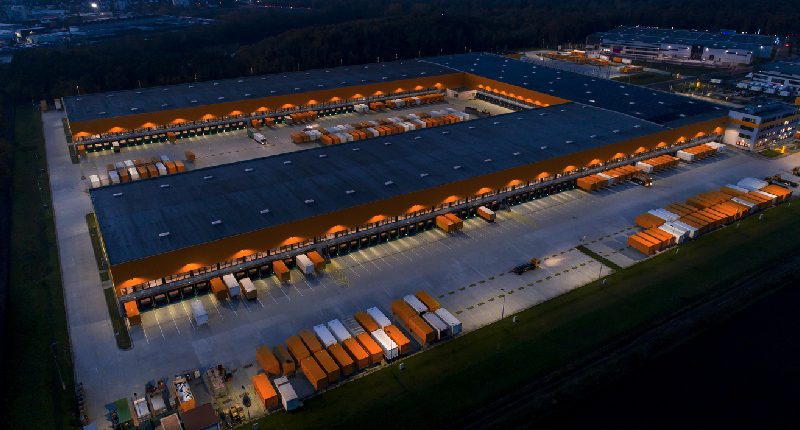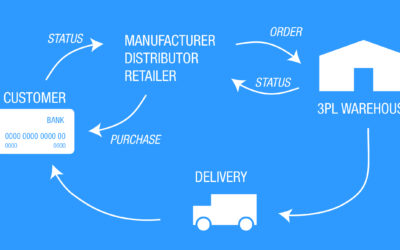7 Overlooked Areas For Supply Chain Improvement
Global supply chains are nothing new, but people rarely spoke about them until the recent pandemic led to disruptions and shortages because of the loss of supply chain efficiency and increased e-commerce. Since then, increased focus on supply chain management and its optimization has encouraged companies to initiate supply chain strategies or at least re-think their current approach to their supply chain.
The supply chain is critical to your overall business strategy, ensuring customer expectations are met and the bottom line remains healthy. However, during the last year or so, COVID-19 tested the world’s supply chain resiliency and found them to be fragile. Post-pandemic, an efficient supply chain is now a priority.
To be sure, supply chain issues still exist, rearing their ugly heads and causing shortages, bottlenecks, and longer lead times. But cost-effective continuous improvement processes will eventually diminish supply chain disruptions, and initiatives to re-design supply chains should restore a sense of normalcy.
With that in mind, here are seven supply chain areas where you could look to begin your supply chain improvements:
1. Supply Chain Planning
Supply chain planning has taken on greater significance in the aftermath of the pandemic. Lack of supply chain visibility and the absence of a backup plan resulted in utter turmoil as unprecedented supply chain disruptions left supply chain leaders feeling helpless.
Many supply chain professionals wonder how to avoid a similar situation in 2023. Is it possible to plan and prepare for something of that magnitude? Fortunately, the short answer is ‘Yes.’
Supply chain planning anticipates the demand for products, materials, and components in conjunction with production, marketing, distribution, and sales. Planning balances supply and demand and ensures that sales revenue opportunities are exploited quickly. In other words, supply chain planning is a progressive process of managing assets to optimize the delivery of goods and services from suppliers to customers. It also helps companies fulfill real-time demand commitments.
If supply chain planning succeeds, coordination among various teams and processes— including sales, marketing, and production—is required. These representatives should meet and estimate demand based on historical data and other parameters. These projections are shared with production, logistics, and other pertinent team members to maintain an optimum inventory and avoid the costs of maintaining surplus inventory levels.
Demand planning involves informal techniques, such as educated guesses, and measurable methods, like historical sales data or current data from test markets. This type of planning and forecasting works in production planning, inventory management, and assessing future capacity needs.
Supply chain planning might require some analytical skills, but if your organization has been overlooking this area of the supply chain, it could be well worth it to acquire those skills.
2. Procurement
Procurement management is acquiring the products, raw materials, goods, and services required for efficient business operations. The terms “sourcing,” “purchasing,” and “procurement” are sometimes used interchangeably to describe this process, with purchasing being an act of buying these goods and services.
If procurement is a weak link in your supply chain processes, your company could be experiencing higher costs and losing its competitive advantage. Procurement should be leveraged to save money, time, and resources by avoiding delays and errors.
However, maximizing resources is only one of the reasons procurement management plays an essential role in a company’s bottom line. It is often responsible for negotiating beneficial production and supplier contracts or analyzing existing vendor partnerships containing automatic processes that are profitable for the supplier.
Managing the procurement processes effectively means businesses must establish and follow specific steps through the procurement lifecycle. These steps will differ by organization, but the following are close to the steps most companies will take:
Planning: Establish the need, set specifications, and plan the quantities and frequency of orders.
Select suppliers: Candidates can come from established relationships or search for new suppliers.
Negotiate and sign a contract: Negotiate the best terms and price after communicating requirements and expectations. Sign the contract.
Place a purchase order with the supplier: The P.O. defines the price, specifications, and terms and conditions.
Expediting: This step isn’t always necessary, but occasionally applying pressure on a supplier gets you an on-time delivery—or an early one!
Receipt and inspection: Review all orders against the specs and quality standards.
Invoice clearing and payment: Inform purchasing and accounts payable to complete the process.
3. Inventory Management
Inventory comprises a company’s raw materials, components, and finished goods. Though it might appear to be an insignificant part of the supply chain, managing it properly can profoundly affect your company’s financial health. The accounting department considers inventory an asset, but it becomes an often overlooked burden if mishandled. Also, just-in-time manufacturing adds one more ingredient to the mix.
Inventory management allows companies to identify which and how much stock to order and when. It tracks your inventory from purchase to sale of goods and identifies and reacts to trends, ensuring enough supply to meet customer demand and warning of shortages. It is critical to a company’s health since it monitors inventory levels, confirming there is not too much or too little stock on hand while limiting the risk of stockouts or unsold stock.
Although the two primary benefits of inventory management are guaranteeing that orders are filled and boosting profits, it also provides these advantages:
Improving Cash Flow: Proper inventory management means you spend money on inventory that sells, and cash continues to move through the business.
Satisfying Customers’ Expectations: One essential component of developing loyal customers is providing them with the items they want without waiting.
Saving Money: When companies understand stock trends, they know how much of an item they have in stock and can use the inventory they already have. This advantage helps them decrease costs tied up in inventory and lowers the amount of unsold stock.
4. Manufacturing and Production
Manufacturing is a critical part of a supply chain. It refers to turning raw materials into finished products and all the components that make it possible, such as labor, technology, tools, and machinery.
Manufacturing activities fall within a supply chain, and supply chains provide the logistics of getting products from start to finish. Optimizing manufacturing practices positively affects the supply chain, so finding ways to streamline production means improving your supply chain. Here are a few suggestions:
Automation: Automated manufacturing, such as robotics and high-tech machinery, provide numerous benefits, including fewer human errors, reduced production time, better production tracking, and help close the skills gap and labor shortages. In addition to robotics and CNC technology, the future of manufacturing will see more use of artificial intelligence (AI), the internet of things (IoT), machine learning, improved shop safety, and more digital manufacturing technologies.
Supply chain digitization: Manufacturers should move away from Excel spreadsheets and embrace digitization from the sales and ordering stages through the production and logistics processes. Working with centralized, integrated planning and production solutions also allows them to collect, sort, and analyze data, improving supply chain performance.
5. Transportation
Transportation has a significant impact on the efficiency of your operations. It is an integral part of the supply chain and is essential in building and maintaining your business’s reputation. In other words, excellent transportation can mean the difference between exceeding customer expectations and canceled orders.
Effective transportation management determines how quickly your customers get their orders and how much it costs them. Most supply chain leaders will caution you that your company’s transportation system requires logistics management to stay abreast of customer demands and outperform your competitors.
However, supply chains are complex and depend on ever-changing customer demands, and they only provide the maximum value with effectively organized transport. This complexity makes logistics a critical factor in the quality of the supply chain. Although transporting goods might give the impression of simplicity, it requires lots of specialized knowledge, skills, and professional management.
Transportation is not only moving goods from one place to another, but it’s also a way to enable all the other operations within a supply chain. The role of transportation is to increase the efficiency of your operations by getting raw materials, intermediate products, and finished goods from their origin to their destination.
When done correctly, inventory flows better, customer satisfaction improves, geographical barriers are broken down, and priorities are met. Unfortunately, many organizations need more expertise to handle their complicated logistics operations and choose to outsource them to a third-party logistics service that does.
Third-party logistics companies (3PLs) could be another overlooked supply chain area that could add value to your overall operations.
6. Warehousing
How companies store and manage goods can impact their business strategy. Warehousing is the process of storing physical inventory for sale or distribution, and there are two ways to do it: general warehouses and distribution warehouses. Companies typically use general warehouses to store goods for the future, say the holiday season, while distribution warehouses have more services and shorter-term storage.
E-commerce businesses often purchase bulk products from their suppliers, who send them to their warehouses for storage. Customers can order from the e-commerce site, and the business picks and packs the product from the warehouse and ships it directly to the customer. Sometimes, the company does not own the warehouse but outsources its inventory storage to a third-party fulfillment provider.
Whether owned by the storing company or a third party, distribution warehouses often use automation for storage and retrieval. Automated storage and retrieval systems (ASRS) have specialized equipment and controls to help warehouses handle, store, and retrieve items, resulting in faster access times, improved accuracy, fewer workers, space-saving, and safer ergonomics.
Although these various systems are available for companies of any size, they have one thing in common: they can help you store and handle your products safely and efficiently.
ASRS systems and other automated storage systems are not only beneficial to e-commerce businesses. Most manufacturers need more space in their facilities to hold inventory but must keep up with demand. Having additional stock available in local warehouses allows these companies to access products during high-volume times. They don’t have to be concerned about slow producers and suppliers.
7. Customer Service
Some companies have set standards for customer service that are challenging to match. However, meeting customer expectations is no longer merely an option—it’s a given. And those who fail to deliver a consistent and dependable experience will fall by the wayside. Customers also expect support when needed, which requires a high degree of knowledge, and they want to receive it courteously and attentively.
Caring about your customer’s experience isn’t enough in today’s competitive market. You have to back up your commitment to customer service with the right processes and solutions that deliver results. Here are some ways your supply chain business can improve the customer experience.
Although caring about your customer’s experience is essential, you need the right processes and solutions to support your customer service commitment. Here are a few tips to consider:
Be Flexible
Flexibility is one of the keys to meeting the challenges of today’s supply chain. Flexibility in this context could mean a logistics company has relationships with several suppliers and shippers, ensuring delivery promises to customers are kept regardless of the external conditions.
Provide Transparency
You provide complete transparency throughout the supply chain by changing your tracking system to barcodes or RFID tags. Customers can see which items are in stock and track their orders through the fulfillment process.
Integrate Your Logistics System
Staying competitive and providing an excellent experience is difficult if your systems are separate. Integrating your logistics system with a warehouse management system (WMS) is a better solution, and these systems handle customer contacts, order fulfillment, inventory, shipping, and finance.
Take Advantage of Automation Solutions
Automation technology enables you to offer a better customer experience by reducing errors, speeding up the order fulfillment process, and making everything more transparent.
Get Buy-In from Your Workers
A commitment to customer service should radiate throughout the organization, and it can’t work if only management commits. Companies should provide continuous training and incentives to help their staff understand why the customer experience is a priority.
A Final Word
Every business is unique, but a well-thought-out strategy can transform the supply chain and increase the bottom line of most of them. If you have already focused on some of these areas, integrating the rest could add significant value to the supply chain.




